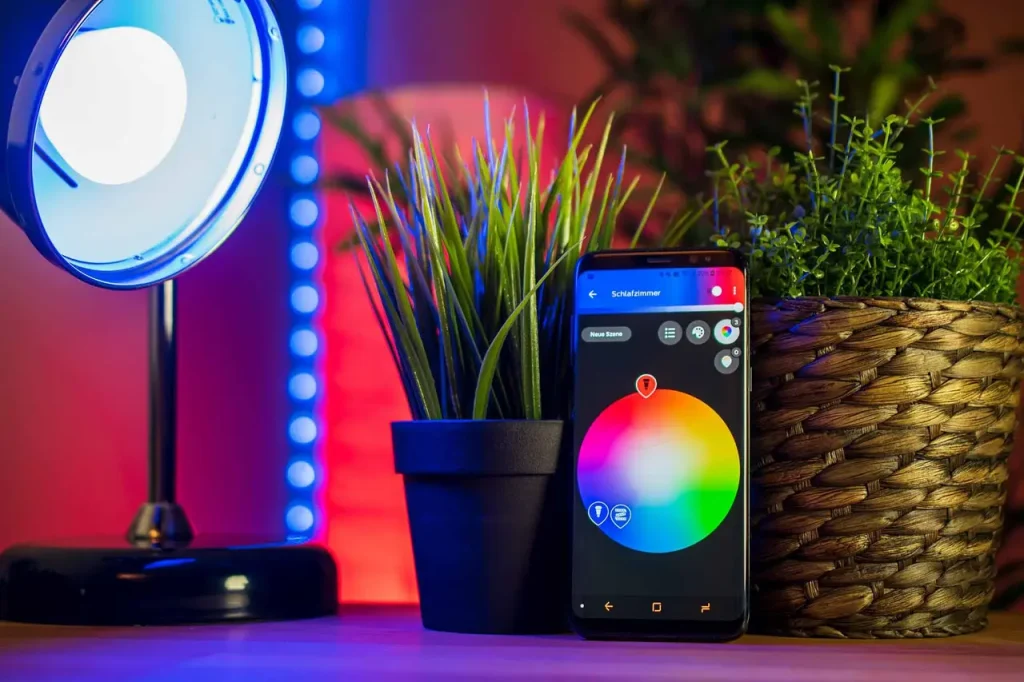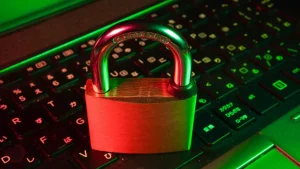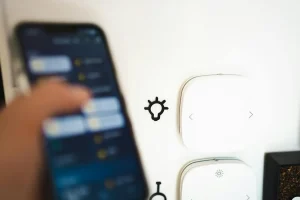
Save Energy With Smart Home Technology A Complete Guide
I still remember staring at my electricity bill last winter, my jaw practically on the floor. How was it possible for one household to consume that much power? It felt like a losing battle. But then I discovered that you can fight back against soaring utility costs, and the best weapon in your arsenal is right inside your home. It’s time to seriously consider how to save energy with smart home technology. It’s not just a fancy gimmick for tech enthusiasts anymore; it’s a practical, powerful solution for the modern homeowner.
The Dawn of Smart Home Energy Efficiency
We’ve moved far beyond the clapper and novelty remote controls. Today’s smart home ecosystem is a sophisticated network designed to make life easier, more comfortable, and, crucially, more efficient. The initial “wow” factor of turning on a light with your voice has evolved into a deep, data-driven approach to household management. The ability to make your home more energy-efficient is no longer a futuristic dream but a present-day reality. This shift represents a fundamental change in how we interact with our living spaces, turning passive houses into active partners in conservation.
Understanding Your Home’s Energy Footprint
Before you can make any meaningful changes, you have to know where you’re starting from. You can’t fix a leak if you don’t know where the water is coming from, right? The same principle applies to your home’s energy consumption. You need to become a detective, and your first case is to uncover the biggest energy criminals lurking in plain sight. This initial investigation is the most critical step in making your home more efficient.
Identifying Energy Hogs in Your Household
Let’s be honest, some of our favorite devices are absolute power vampires. I did a home audit once and was shocked. My old plasma TV, even on standby, was a major culprit. Seriously, that thing drank electricity. Other common energy hogs include outdated refrigerators, gaming consoles left in rest mode, and that second freezer in the garage. These devices, along with anything that uses a “phantom load” to stay ready, are constantly draining your wallet. Identifying them is your first big win.
The Role of Smart Technology in Energy Monitoring
This is where the fun begins. You don’t have to guess anymore. Smart home energy monitoring systems give you a real-time, granular view of your usage. Wondering how much that old air conditioner is costing you? Just check the app. Many systems offer incredible smart home energy monitoring app features, allowing you to see exactly which circuits or individual devices are the thirstiest. This data is power. It transforms abstract utility bills into actionable insights, showing you precisely where you can cut costs.
Essential Smart Home Devices for Maximum Savings
Okay, you’ve identified the problems. Now for the solutions. A few key upgrades can have an outsized impact on your consumption. We’re talking about the best smart home devices to reduce energy bills, the foundational pieces of your new, efficient home. Investing in these core components is the fastest way to see results.
Smart Thermostats: Mastering Climate Control
People always ask, do smart thermostats really save money? The answer is a resounding yes, but with a major caveat: you have to let them do their job. If you constantly override its smart schedule, you’re missing the point. A smart thermostat learns your habits, senses when you’re home or away, and adjusts the temperature accordingly. It’s the brain of your smart home climate control for energy reduction.
Predictive Scheduling and Geofencing Explained
This is the magic. Predictive scheduling means the thermostat learns your weekly routine. It knows you leave for work at 8 a.m. and lowers the heat, then starts warming the house back up just before you get home. Geofencing takes it a step further by using your phone’s location. Leave the house unexpectedly? It automatically switches to “Away” mode. It’s a brilliant method to conserve energy without even thinking about it.
Remote Access for On-the-Go Adjustments
I once went on a week-long vacation and had that sinking feeling halfway to the airport: I’d left the heat blasting. Total nightmare. But instead of panicking, I just pulled out my phone, opened the app, and set it to vacation mode. That single action probably saved me a significant amount on my next bill. This remote control is a game-changer and a perfect example of how smart home technology saves electricity.
Smart Lighting: Illuminating Savings
Smart lighting is about so much more than just convenience. It’s a cornerstone of any energy-saving strategy. The benefits of smart lighting for energy conservation are twofold: they use more efficient bulbs and give you unparalleled control over when and how they’re used. Forget walking through the house flipping switches; automation is your new best friend.
LED Integration and Dimming Strategies
First things first: if you haven’t switched to LED bulbs, do it now. Smart LED bulbs last for years and use a fraction of the power of their incandescent ancestors. But the “smart” part comes with control. Dimming the lights by just 20% is barely noticeable to the eye but can lead to significant savings over time. You can create “scenes”—like “Movie Night” or “Dinner”—that automatically set lights to a lower, more atmospheric level.
Motion Sensors and Automated Ambience
Motion sensors are brilliant. Absolutely brilliant. They are perfect for rooms where lights are frequently left on by mistake, like bathrooms, hallways, or basements. The light comes on when you enter and, more importantly, turns off after you leave. It’s a simple, set-it-and-forget-it way to cut down on electricity use.
Smart Plugs and Power Strips: Battling Phantom Load
Let’s talk about those little vampires again. Phantom load, or standby power, is the electricity consumed by devices when they’re turned off but still plugged in. It’s a silent killer on your utility bill. Smart plugs are the stake you can drive through its heart. This is how you reduce standby power with smart home tech effectively and easily.
Real-time Device Usage Insights
Many of the best smart plugs for phantom load come with energy monitoring built-in. You can see, down to the watt, exactly what that phone charger or entertainment center is pulling when it’s “off.” This information can be shocking and is often the final push people need to get serious about their energy habits. It’s one of the most eye-opening smart home automation ideas for lower utility costs.
Custom Schedules for Power Management
Here’s how to set up smart plugs for energy saving: put everything that doesn’t need to be on 24/7 on a schedule. Your entertainment center? Have it power down completely overnight. The coffee maker? It only needs power for an hour in the morning. These custom schedules ensure you’re only paying for the electricity you’re actually using, a core principle of using smart tech for efficiency.
Smart Appliances: The Future of Energy-Conscious Living
The next frontier is here. We’re now seeing energy efficient smart home appliances explained in mainstream stores. Smart refrigerators can run defrost cycles during off-peak hours, dishwashers can be scheduled to run when energy is cheapest, and smart laundry machines can use cold water cycles more effectively. It’s an exciting evolution in our quest for a more efficient home.
Crafting Your Smart Energy Saving Strategy
Buying the gear is only half the battle. To truly succeed, you need a plan. A haphazard approach of just plugging things in won’t yield the best results. You need to think about your home as a single, integrated system, which is the key to maximizing your savings.
Assessing Your Home for Smart Upgrades
Start small. You don’t need to automate every single outlet on day one. Walk through your home and identify the biggest opportunities. Is your HVAC system ancient? A smart thermostat should be your top priority. Do the kids always leave the lights on in the playroom? Start there with smart lighting. It’s about finding cost effective smart home solutions for saving energy that fit your specific needs.
Seamless Integration for Enhanced Automation
The real power is unlocked when your devices talk to each other. This is all about integrating smart home devices for energy efficiency. For example, you could create a “Goodbye” routine that, with a single command, turns off all the lights, adjusts the thermostat, and powers down your entertainment center. This level of automation ensures no energy is wasted by human error.
Setting Realistic Goals for Energy Reduction
Don’t expect your bill to vanish overnight. So, how much energy do smart homes save? It varies, but a realistic initial goal is a 10-20% reduction. Track your progress. Use the data from your smart devices to see what’s working and refine your strategy. Celebrate the wins and look for new areas to improve. This energy-saving journey is a marathon, not a sprint.
Beyond the Savings: Additional Benefits and ROI
While the financial savings are fantastic, they aren’t the only reason to embrace this revolution. The return on investment extends far beyond your bank account. Adopting this technology enhances your entire lifestyle.
Boosting Comfort and Convenience
There’s an undeniable cool factor, but the practical comfort is even better. Waking up to a house that has gently warmed itself just for you is a small luxury. Adjusting the lights from the couch because you’re comfortable and don’t want to get up is a simple pleasure. It’s just one of many daily money-saving tips without sacrificing comfort that a smart home provides.
Increasing Home Value with Smart Upgrades
A home equipped with smart, energy-saving features is a major selling point in today’s market. It signals to potential buyers that the home is modern, well-maintained, and cheaper to run. These upgrades are an investment not just in your monthly bills, but in the long-term equity of your property.
Contributing to a Greener Planet
Every kilowatt-hour you save is one less that needs to be generated. By reducing your consumption, you’re also reducing your carbon footprint. This is smart home technology for sustainable living. You save money while also doing your part for the environment—a true win-win situation.
Overcoming Challenges and Common Misconceptions
Of course, it’s not always a completely smooth ride. There are valid concerns and occasional frustrations. But these challenges are easily managed and shouldn’t deter you from this goal. It just takes a little awareness.
Addressing Privacy and Security Concerns
Look, I get it. Putting more devices on your Wi-Fi network can feel risky. The key is to stick with reputable brands that have a proven track record on security. Use strong, unique passwords for your accounts and enable two-factor authentication whenever possible. Basic digital hygiene goes a long way.
Troubleshooting Smart Home Connectivity
Sometimes, things just… stop working. It happens. Your Wi-Fi might glitch, or an app might need an update. Before you throw a device against the wall, try the universal IT solution: turn it off and on again. I’m not kidding, it solves the problem about 90% of the time. A little patience is sometimes required for these smart upgrades.
Embracing a Smarter, More Sustainable Home
The initial cost and setup can seem daunting, but the long-term benefits are undeniable. It’s an investment in your financial well-being, your daily comfort, and the health of the planet. Starting this journey is one of the most impactful upgrades you can make to your home. You’re not just buying gadgets; you’re building a more responsive, efficient, and intelligent living space. So take that first step. Your wallet—and the world—will thank you. Making your home smarter and more efficient is simply the smartest move a homeowner can make today.







